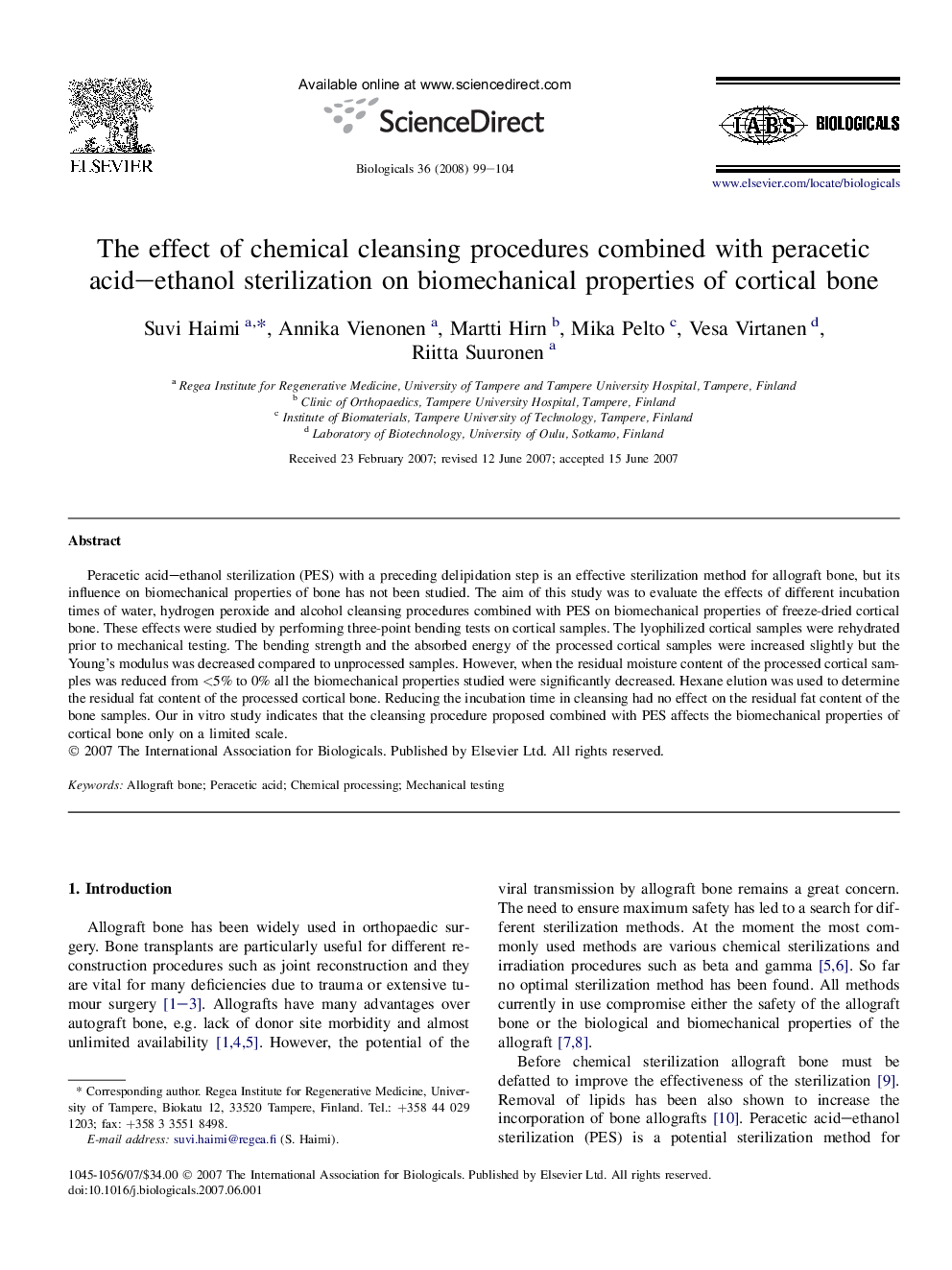| Article ID | Journal | Published Year | Pages | File Type |
|---|---|---|---|---|
| 2034327 | Biologicals | 2008 | 6 Pages |
Peracetic acid–ethanol sterilization (PES) with a preceding delipidation step is an effective sterilization method for allograft bone, but its influence on biomechanical properties of bone has not been studied. The aim of this study was to evaluate the effects of different incubation times of water, hydrogen peroxide and alcohol cleansing procedures combined with PES on biomechanical properties of freeze-dried cortical bone. These effects were studied by performing three-point bending tests on cortical samples. The lyophilized cortical samples were rehydrated prior to mechanical testing. The bending strength and the absorbed energy of the processed cortical samples were increased slightly but the Young's modulus was decreased compared to unprocessed samples. However, when the residual moisture content of the processed cortical samples was reduced from <5% to 0% all the biomechanical properties studied were significantly decreased. Hexane elution was used to determine the residual fat content of the processed cortical bone. Reducing the incubation time in cleansing had no effect on the residual fat content of the bone samples. Our in vitro study indicates that the cleansing procedure proposed combined with PES affects the biomechanical properties of cortical bone only on a limited scale.
